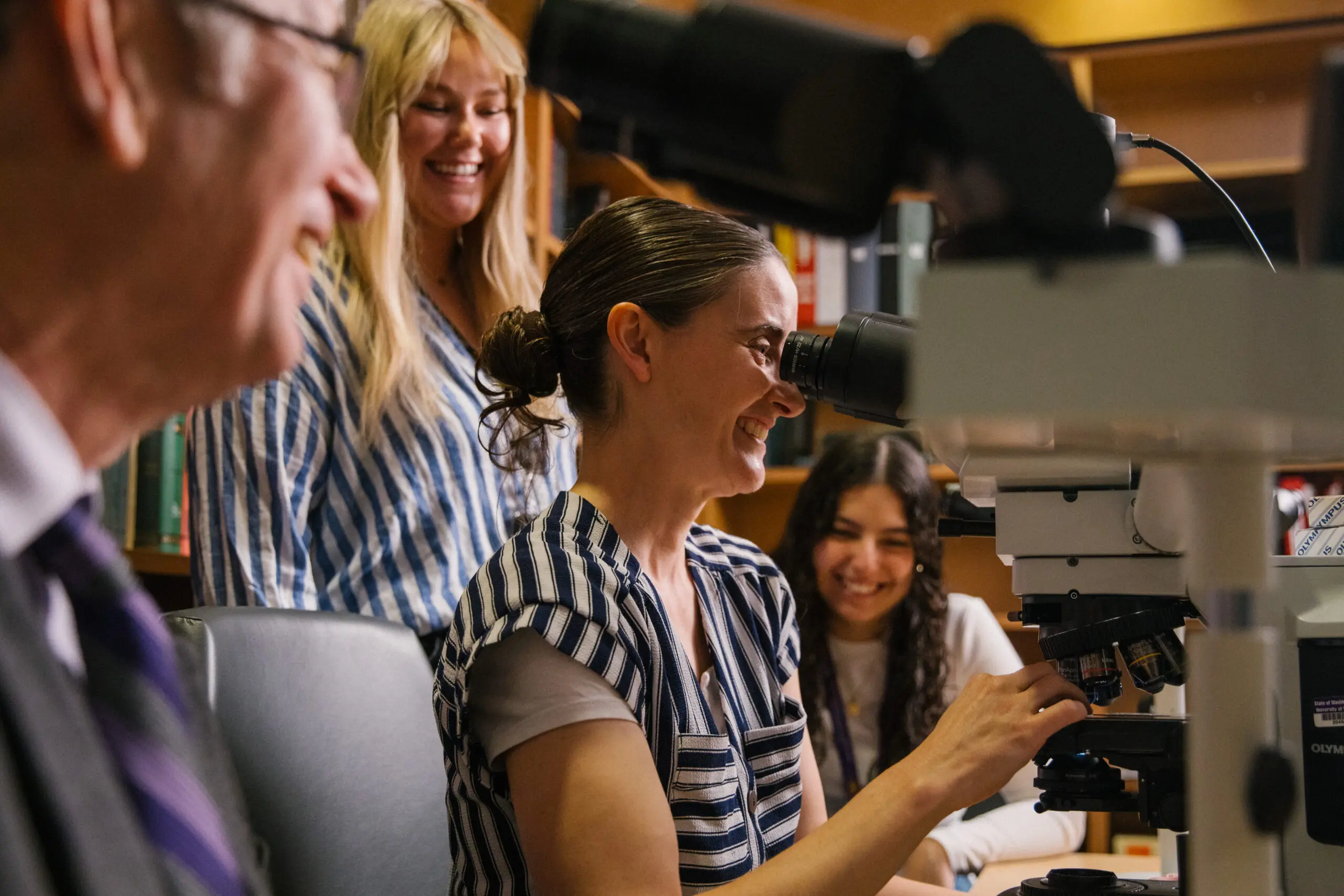When Lexi Walls, PhD ’19, a research scientist in the Department of Biochemistry at the University of Washington School of Medicine, began studying coronavirus spikes in 2015, not much was known about them. If scientists didn’t understand the spike’s structure, Walls realized, it would be difficult to treat or develop vaccines for that family of viruses.
As Walls completed her doctorate in December 2019, the SARS-CoV-2 virus (which causes COVID-19) was just emerging in Wuhan, China. Soon, COVID-19 was spreading rapidly around the world, and Walls’ research on the coronavirus’s spike protein would become an important part of the global response.
When the genetic sequences for the novel coronavirus were released in January 2020, Walls and her advisor, David Veesler, PhD, an associate professor of biochemistry at the University of Washington School of Medicine, immediately reached out to King to propose a collaboration.
“Neil jumped on board right away, and he got a huge team of people at the IPD to join forces quickly,” says Walls. “We were constantly talking, sharing data and helping each other solve problems. I had never had a collaboration like that before, and it was really fun to be working towards the same goal with the same intensity at the same time.”
The collaborators adapted the King group’s nanoparticle design to create a new COVID-19 vaccine candidate, named RBD-I53-50. Unlike mRNA vaccines, RBD-I53-50 is shelf-stable, so it’s easier to store and doesn’t need refrigeration, an important factor for global distribution. RBD-I53-50 focuses on the Achilles’ heel of the SARS-CoV-2 spike protein, called the receptor-binding domain, driving the immune system to block entry of the virus into our cells.
With funding from the Bill & Melinda Gates Foundation and the Coalition for Epidemic Preparedness Innovations (CEPI), the Veesler and King labs teamed up with the IPD spinout company Icosavax and SK bioscience, based in South Korea, to develop the vaccine. In late 2020, SK bioscience began a combined Phase 1/2 clinical study, which is currently in the second stage. And in August 2021, they received support for a Phase 3 study, bringing the vaccine another step closer to approval and distribution.
Although the RBD-I53-50 vaccine is advancing quickly, Ellis emphasizes that years of scientific research laid the foundation for its development.
“The trajectory of vaccine research isn’t always straight,” says Ellis. “But even if research doesn’t lead to a successful vaccine for one virus, it can enable very important developments for other viruses. For example, even though we don’t yet have a successful HIV vaccine, that research has made many other vaccines possible, including for COVID-19. So preparing for as many pandemic threats as possible will advance science and the future of vaccines.”
And the IPD’s long-term vision is even more ambitious. They want to significantly expand the computing power of their protein-design software so new vaccine candidates like RBD-I53-50 can be developed and made ready for testing in just weeks.
Today, we’re still facing COVID-19. But it’s only a matter of time until the next viral threat emerges. So how can we get closer to a pandemic-free tomorrow?




